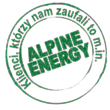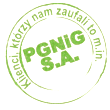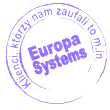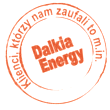Pressure equipment - portable vessels - cylinders (oxygen, nitrogen, argon, hydrogen, air)
What is a portable tank?
Usually by portable tank we mean devices such as:
- fire extinguisher container for the extinguishing agent,
- breathing apparatus cylinder,
- cylinder of diving apparatus
- the tank of a special device.
Information on technical gases
Everyone at school has an idea of the existence of gases, but how do we obtain them, what do they serve us for? Through cryogenic separation and separation of liquefied air, often separation with membranes or selective absorption, we can obtain gases such as oxygen, nitrogen, argon and air. In chemical processes, we obtain hydrogen and nitrogen oxides. Gases are divided into categories. Which ones?
- Compressed - used in industry and services
- Liquid and flammable - support the flame and provide heat
- Medical - for anaesthesiology, disease diagnosis and prevention
Working with gases requires a licence and the right qualifications! It is dangerous work and requires non-standard technical solutions in handling cylinders. All activities require knowledge of the rules Health and Safety and special care. Thanks to regulations and standards, we know how to handle cylinders, as this is precisely defined in such documents. Safety considerations dictate that gas cylinders should be kept outside the workplace and that the gas should be supplied to the work area by means of special pipe lines made of suitable materials and tightly connected. Gas fuses are necessary components of gas mains that are responsible for the safety of working with flammable and explosive gases. They are the ones that protect the health and lives of workers. The safety non-return valve ensures that the gas flow is in the right direction, while quick couplings enable fast, leak-free connections. Equipment or systems to detect and warn of the presence of hazards resulting in poisoning, fire or explosion are essential in the workplace, they are responsible for the greatest safety of workers.
Purpose of portable tanks

Liquid nitrogen is used for freezing, thus serving in the construction industry to stabilise the ground. In addition, it is used in fire-fighting operations. As a rule, gases are used to shape plastic products or for leak testing of pressure installations.
Distribution:
- Argon - argon distribution is most often needed in the metallurgical or electronic industries. Argon is the base for shielding gas mixtures. It is a noble gas, chemically inert, colourless and odourless. It has a higher compressibility compared to perfect gas. A cylinder of argon at 200 bar holds 7% more of this gas.
- Nitrogen - it is used in industry, in the food industry (packaging, freezing, refrigeration) and in research work. It is colourless, odourless and tasteless, and non-flammable, but it suppresses the combustion process.In high concentrations, it can have a suffocating effect. Below 196°C, it changes its state to liquid. Remember to observe safety precautions when distributing nitrogen and in its subsequent use!
Remember, to be able to work with cylinders it is essential to enrol on a course and get the required entitlements. Safety at work is a priority.





























